Downriver from Hannibal we passed the dam and lock number 22. I hung out on deck and got a sequence of photos passing through the lock.
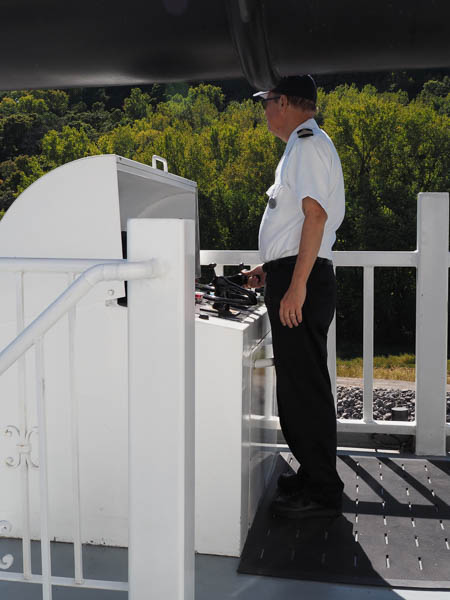
As we approach a lock, the pilot comes to the wing bridge on the side of the boat. From this location he gets a better view of how the boat is navigating the narrow passages.
The black structure at the top of the picture is one of the ornamental "smokestacks." For most of the Upper Mississippi the railings and furniture on the sundeck were stowed to allow passage of low bridges.
As we cruised downriver, the sundeck was opened, but we never reached the area of the river where the "smokestacks" could be raised. Presumably once we reached the part of the Lower Mississippi where the bridges could accommodate ocean-going vessels, the smokestacks would have been raised and the boat could proceed in all her glory.
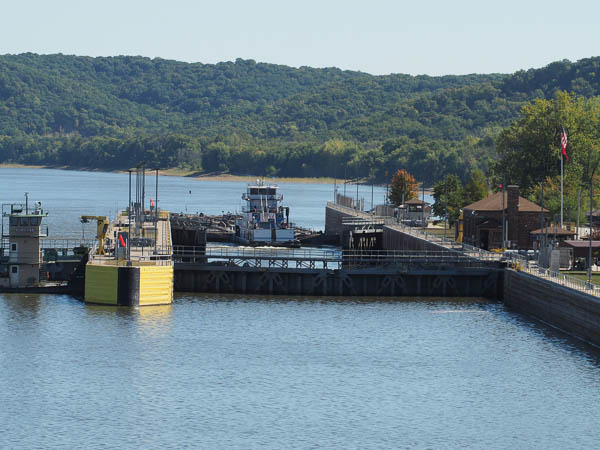
As we approach, the tow ahead of us leaves the lock. Once it is clear, the downstream doors will close and the lock chamber will fill until the water level matches the upstream side.
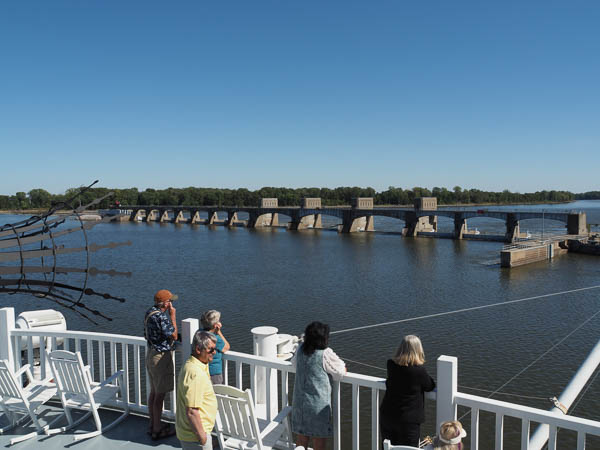
The dam extends to the far shore.
There is a spillway on the far side of the dam from the lock.
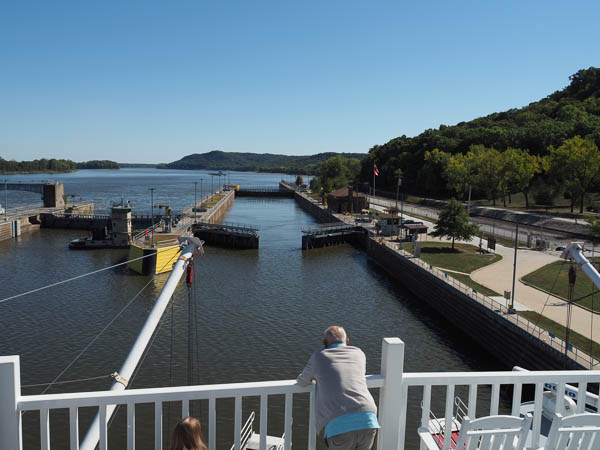
Now that the water in the lock has been raised to the upriver level, the doors are opening to allow us to enter.
The tow ahead of us has already made good time downriver.
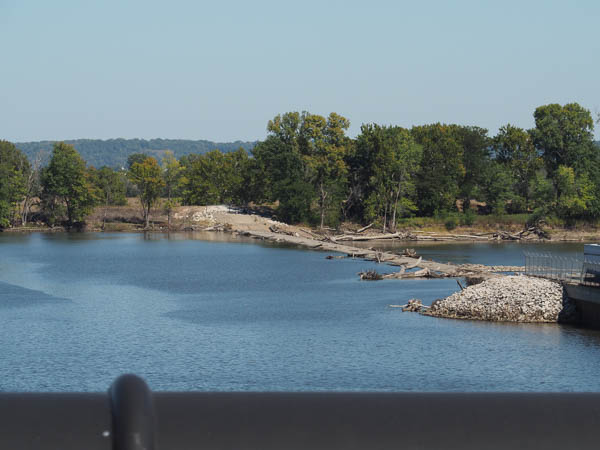
The spillway gives vehicle access to the dam in normal water conditions.
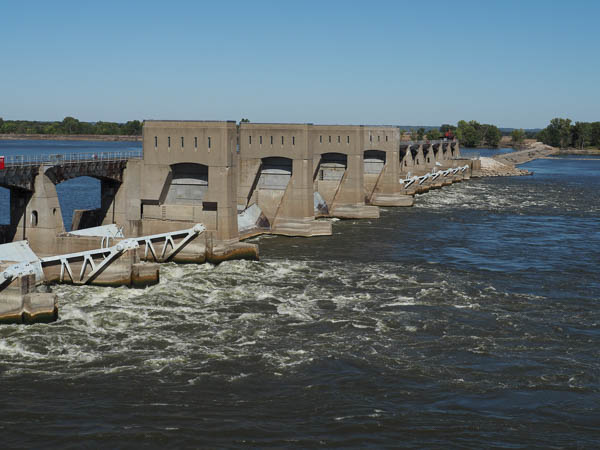
The view downstream of the dam shows its various components.
The turbulence is caused by partially open Tainter gates. At the time of our cruise, our Riverlorian, Steve Spracklen, gave presentations on the function of this turbulence on fish health and channel maintenance and erosion, but the two intervening months before I could write this up have wiped my mental slate clean. Suffice it to say that it has an effect. The turbulence also keeps the water from freezing in winter. Bald eagles find it a great place to hunt for fish in the colder months.
The central three roller dam segments show a lack of turbulence. (The upriver dam #15 at Rock Island is the world's largest roller dam.) Such dams are dangerous to swimmers and boaters because the rolling action of the water immediately downstream of the dam will capture and hold anyone who ventures or falls into the area.
This dam has been chosen for a fish passage project that will allow migratory fish access across the dam. Funding is included in the 2022 infrastructure bill passed by Congress.
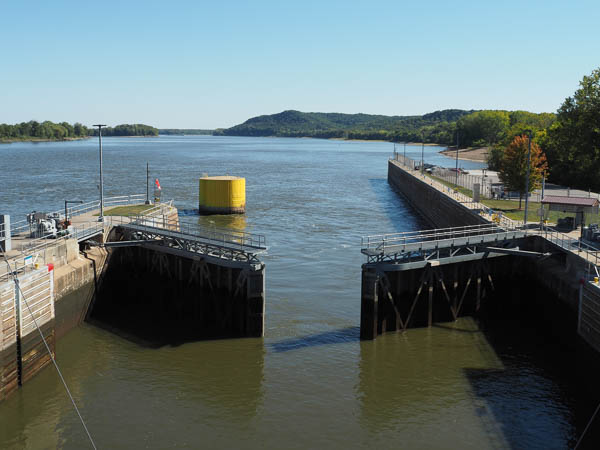
The lock has brought us down to the level of the pool below the dam and is now letting us out. The tow that preceded us is almost out of sight. There were boats behind us ready to proceed in the next cycle.
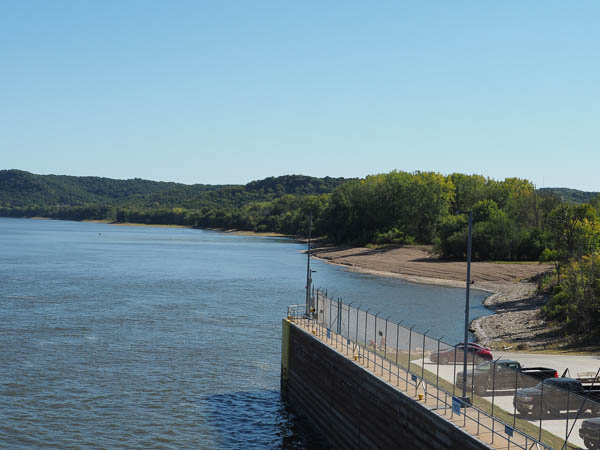
The low water is evident here as we leave the lock.
An announcement this afternoon was our first warning that the remainder of the trip was not going to go as planned. We had been scheduled to stop in St. Louis, but were told that low water (and high crime) prevented our docking there. Instead we were diverting to Kimmswick, MO. Except that we couldn't dock there either. So we went to Alton, IL.
Click your "back" button to return to the previous page or click for our picture album.